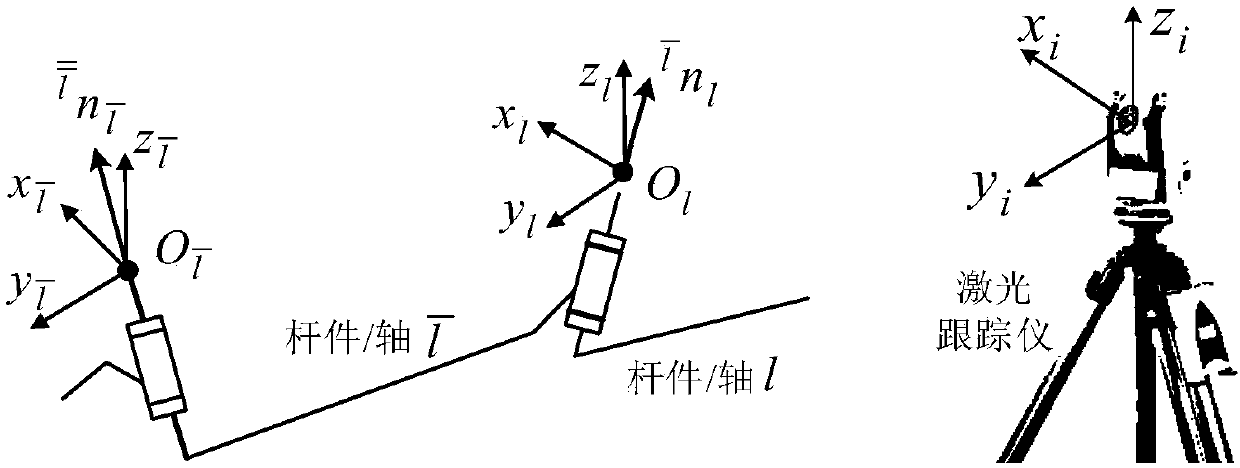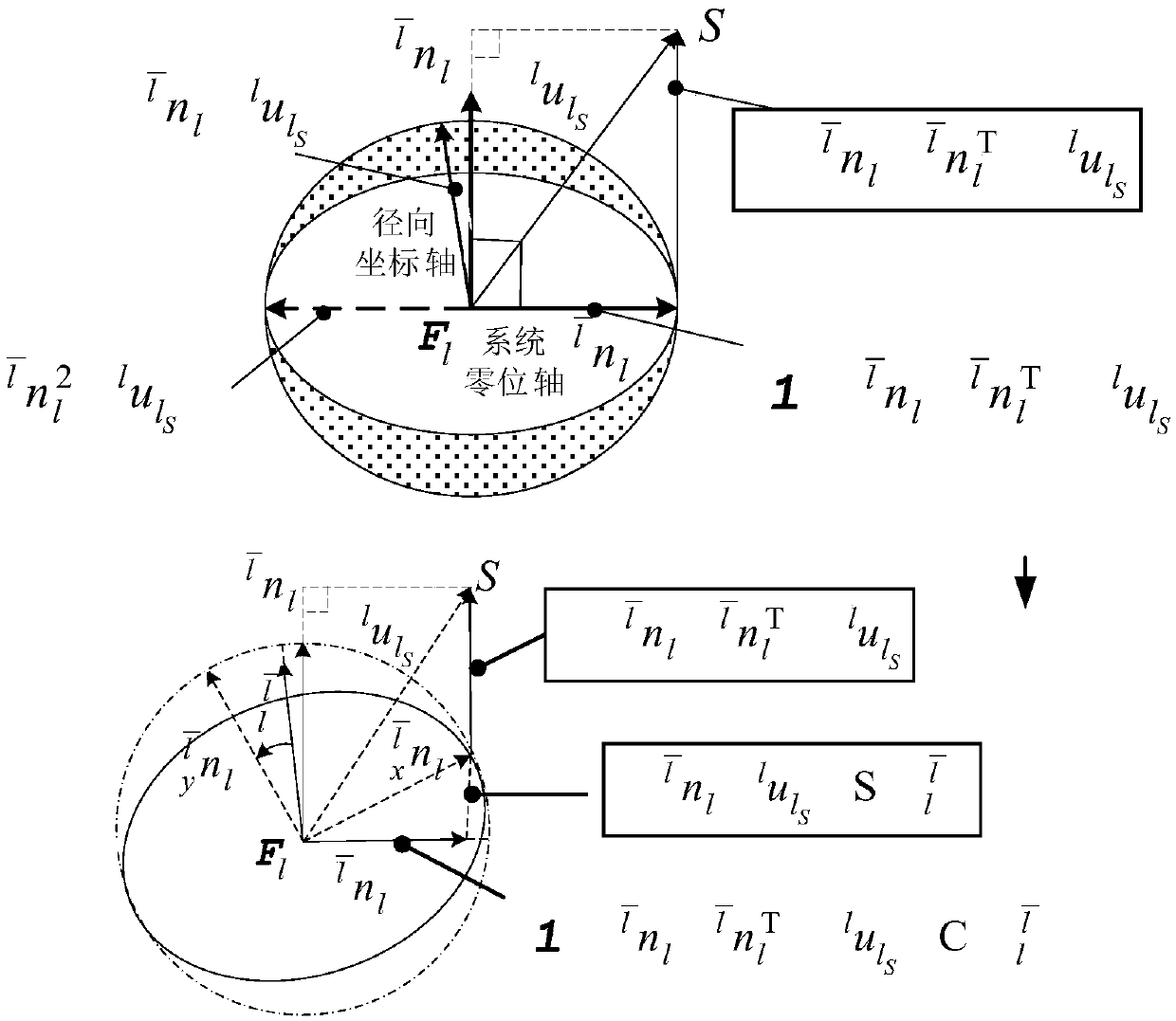Inverse modeling and resolving method of universal 6R mechanical arm based on shaft invariant
A robotic arm and variable technology, applied in the field of robotics, can solve the problems of inverse solution calculation difficulties, reduce the absolute positioning accuracy of the robotic arm, and increase the processing and assembly difficulty of the robotic arm.
- Summary
- Abstract
- Description
- Claims
- Application Information
AI Technical Summary
Problems solved by technology
Method used
Image
Examples
Embodiment 1
[0276] Given 2 2D row vector polynomials and On the one hand, from formula (5) we get
[0277] on the other hand,
[0278] The above results verify the correctness of formula (5).
[0279] Give the determinant computation theorem for block matrices:
[0280] If the square matrix whose size is (n+m)·(n+m) is recorded as M, the matrix whose size is n·n It is a sub-matrix composed of the first n rows and any n columns of elements of the square matrix M, and the size of the matrix is m m It is a sub-matrix composed of m rows and remaining m columns of elements in the square matrix M; the sequence cn and cm composed of the matrix column numbers arranged in ascending order is a subset of the sequence [1:m+n], [cn, cm]∈, and there is cm∪cn=[1:m+n]; then the square matrix and The determinant relationship of
[0281]
[0282] The principle of row stepping calculation of determinant:
[0283] For an S×S matrix, each item is about τ 1 The nth degree polynomial. W...
Embodiment 2
[0286] Through the elementary row transformation of the matrix, we get The row echelon matrix of .
[0287] The steps are: rk represents the kth row. have to
[0288]
[0289] then have
[0290] N-order polynomial system based on "N-carry word":
[0291] If n "n-ary 1st order" polynomial power product If the independent variable appears repeatedly N times, then n "n-element N-order" polynomial systems are obtained "N-element N-order polynomial system" and "n-bit N-carry word" isomorphic.
[0292]
[0293]
[0294]
[0295]
[0296] Dixon polynomials of a system of n "n-ary n-order" polynomials:
[0297] Introduce auxiliary variable [y 2 ,y 3 ,...,y n ], with
[0298]
[0299] In the multivariate polynomial (9), with the auxiliary variable Y m The first m in turn replace the original variables (OriginalVariables) X n For the m variables in , record "|" as the replacement operator to get the extended (Extended) polynomial
[0300]
[0301...
Embodiment 3
[0364] Dixon elimination is performed on the polynomial system (40).
[0365]
[0366] The steps are as follows: the formula is a polynomial system of 4 "quaternary 1st order", which satisfies the Dixon elimination condition. From formula (20) and formula (23), get
[0367]
[0368] in:
[0369]
[0370] Five solutions are obtained from formula (35) and formula (41):
[0371]
[0372]
[0373]
[0374] in: is not a solution to this system of equations. Substitute other solutions into formula (36). when , from equation (36) we get
[0375]
[0376] Solved: τ 3 = 1, τ 4 =-2. Will τ 3 and τ 4 Substitute into formula (40) to get τ 2 =1. Similarly, the other three sets of solutions can be obtained. Obviously, the dependent variable does not satisfy formula (27), and the Dixon matrix shown in formula (41) is not symmetrical. This example shows that the Dixon determinant being zero is sufficient for multilinear polynomial systems.
[0377] Fixed...
PUM
 Login to View More
Login to View More Abstract
Description
Claims
Application Information
 Login to View More
Login to View More - R&D
- Intellectual Property
- Life Sciences
- Materials
- Tech Scout
- Unparalleled Data Quality
- Higher Quality Content
- 60% Fewer Hallucinations
Browse by: Latest US Patents, China's latest patents, Technical Efficacy Thesaurus, Application Domain, Technology Topic, Popular Technical Reports.
© 2025 PatSnap. All rights reserved.Legal|Privacy policy|Modern Slavery Act Transparency Statement|Sitemap|About US| Contact US: help@patsnap.com



